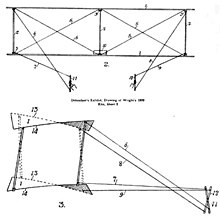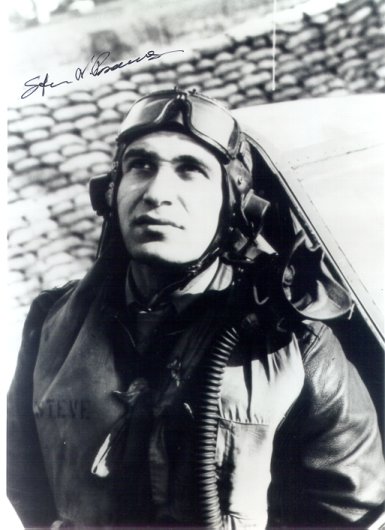In the movie version of the book, "Forrest Gump", the hero just manages though pure serendipity to be present at almost every great event in the 1960s and 70s. Spyridon "Steve" Pisanos was in many ways the Forrest Gump of World War 2. Known then as "Spiro", he was the third child from a family of six, born in late 1919 into a working class family in Athens, Greece.
When he was a boy of twelve he noticed a humming sound, and saw a biplane from the Hellanic Air Force buzzing nearby Kolonos Hill. Like many of us, from that time on he possessed a burning desire to fly. But his family had no spare money, so he contented himself with cutting classes and going most days to Tatoi aerodrome, where he would watch the airplanes coming and going. Eventually that summer, he became braver and found a gap on the fence and walked onto the field. No-one paid any attention, and on later visits, he befriended some of the mechanics and started doing odd jobs.
Eventually the squadron leader noticed him and discovered he was an interloper. Kindly, he turned a blind eye, and also counseled him of how to get into the air force - which would cost money his family didn't have and would take better grades that he was getting. His frequent missing of school eventually caught up with him, and his father told him the facts of life - that flying was dangerous and expensive and he would never be able to do it. He tried to build his own airplane from broken down car parts, but abandoned the attempt and buckled down to get out of high school.
Realizing that life in Greece wouldn't permit him to follow his dreams he decide to leave, and go to America. He couldn't afford to buy a ticket, so he joined the merchant navy seaman's union and started working below decks as a fireman on a freighter His job was to move coal from the bunkers to the boilers, where the stokers would add it to the fires. His plan was to wait for the ship to visit the USA, and jump ship.
In the Spring of 1938, his ship entered Baltimore harbor. Early on a Sunday morning, he climbed over the side and bummed a ride from a small boat delivering newspapers. He only knew 2 words of English - "New" and "York" - where the ex-patriot Greeks lived. Using this limited knowledge he bought a train ticket and made it to New York. Leaving the station, one of the first things he saw was a movie theater with a Greek flag - the theater was showing the first Greek-made movie. Standing outside of it, he heard young male voices speaking Greek. His two new friends took him under their wings, gave him a place to stay and showed him how to sign up for a job at an employment exchange that was run by a Greek.
Spiro started working as a soda-jerk in a Greek-owned restaurant on 149th and Broadway. He slowly started teaching himself to read English. Saving his money, that summer he went to Floyd Bennett field and took his first flight, in a Waco biplane. The Italian instructor told him he needed to speak better English, so he took lessons and eventually started flight training in a J-3 Cub in August 1938.
Money was a challenge, so he changed jobs and moved to Plainfield New Jersey where rent and flying cost less. He took a job at the Park Hotel in Plainfield, and continued his lessons at Westfield airport. In February 1941, the INS caught him. Fortunately for Spiro, by this time Greece had been invaded and was under Nazi occupation, giving him the status of refugee. Also in his favor - the INS agent was himself a refugee and prior illegal immigrant, from Germany. Spiro got his green card, and was now a legal immigrant. In July of that year, he got his private license and flew whenever time and money permitted. He felt like the happiest man on Earth.
A month later, he learned that Royal Air Force was recruiting American pilots to create an "Eagle Squadron" to fight the Germans. Armed with his brand new FAA license, he presented himself and was accepted. At that time US citizens who signed up to flight for the British and Canadians risked loosing their citizenship, but Spiro wasn't American. In November 1941 he was asked to report to a flight school in Glendale CA, where he met the rest of the motley crew. While he was there, Japan attacked Pearl Harbor and Germany declared war on the US.
In the cold of a 1942 Canadian winter, Spiro and the rest of his squadron reported to the RAF in Montreal to be officially inducted into the British armed forces. They crossed the Atlantic by ship and started training at RAF Cosford - beginning with how to march and how to salute, and ending with flying the Hawker Hurricane. In July 1942 Pilot Officer Pisanos was posted to 268 squadron, flying the North American Mustang I (known to the US Army Air Force as the P-51A).
Late in August, the Greek Air Force in exile tried to grab Spiro to fly for them as they reformed their air force flying in North Africa. In order to short circuit their attempt, Spiro (now "Steve") wrangled a transfer to 71 "Eagle" squadron - one of the three all American squadrons flying Supermarine Spitfires.
The following month, the three Eagle squadrons were transferred into the US Army Air Force, which was disaster for Steve, since only Americans could fly for them. However, cooler heads prevailed and Steve was made a 2nd Leutenant in the USAAF - and soon afterwards what was now called the 4th Fighter Group traded their Spitfires for P-47 Thunderbolts. And on May 3rd 1943, the US embassy asked him to attend a special meeting where he was made a US Citizen, the first to be naturalized on foreign soil. Edward B Murrow of CBS reported on it in his radio broadcast, and the story made the Stars and Stripes newspaper. Six days later, Steve got his first kill, a German FW-190.
Soon after, Walter Cronkite interviewed Lt. Steve Pisanos, something that Cronkite remembered later because as he was leaving, Steve buzzed Cronkite's car with his P-47 at very low level - his way of saying "Farewell!".
Early in 1944, the 4th Fighter group was re-equipped with P-51B Mustangs. The Rolls Royce Merlin engines gave a lot of problems initially due to defective spark plugs and problems with fuel quality. In early May 1944 after shooting down his 4 enemy fighters in the same mission (making his score 10 confirmed), Steve's engine failed during his return flight. He made a successful belly landing between Le Havre and Évreux in German-occupied France. Evading capture with the help of the French Resistance, he was hidden in Paris awaiting a chance to escape through neutral Spain. In the meantime, he went on several raids with the Resistance, until on June 4th, the D-Day invasion changed all of his plans. With the US and Free French armies approaching Paris, the Resistance began daylight fighting with German occupying forces, with Steve Pisanos fighting alongside them. On August 23rd, the US 4th Infantry Division reached Paris and Steve was liberated, along with some other US airmen with his group.
On his return to the 4th in England, he learned that he couldn't continue to fly combat missions since he knew too much about the Resistance which he might be forced to tell if he was captured. Promoted to Captain and reassigned to Flight Test at Wright Field, in Dayton Ohio, he first went to Muroc Field (now Edwards Air Force base) in California to attend Test Pilots School (and met the famous Pancho Barnes), flying the first American jets (the P-80) and captured Germany aircraft such as the Me262 jet. Soon Captain Chuck Yeager and Lt. Bob Hoover joined the flight test team along with Gabby Gabreski, Don Gentile and and Dick Bong - all famous pilots in their own right, either then or later.
In January 1946, Steve left the Air Force to become a pilot with TWA. Shortly after that, he met his future wife, Sophie Pappas. They married in June 1946. The uneven life of an airline co-pilot and frequent furloughs took their toll on his small but growing family, and in October 1948 he rejoined the renamed USAF, again flying as a test pilot on F86 and F-100 aircraft. As a full Colonel, he served in Vietnam in the late 1960s, but his career came full circle when in 1974 he was assigned to the USAF delegation integrating the McDonnell Phantom II into the Greek Hellanic Air Force squadrons flying out of Tatoi airfield, just outside of Athens - the same airfield where as a boy he had cut classes to stand outside the perimeter fence, wishing to fly.
For more details, see his wikepedia page. At the time of writing, Colonel Steve Pisanos is 93, and lives in San Diego.
http://en.wikipedia.org/wiki/Steve_Pisanos








